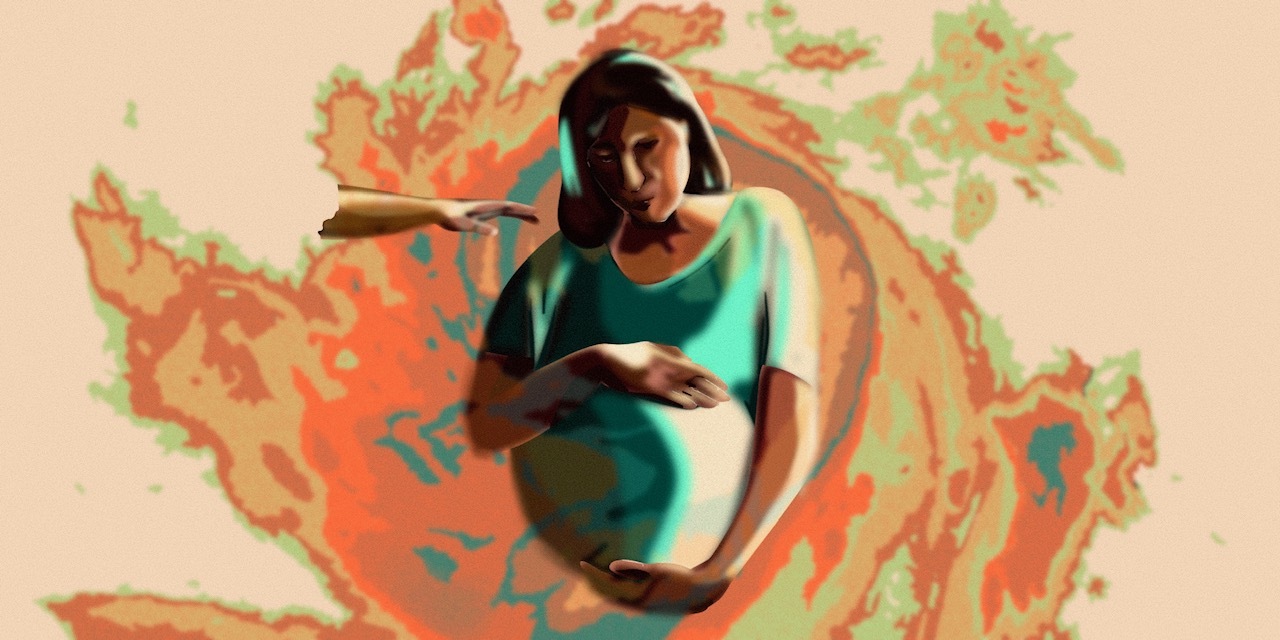
On the day Livia Marati was due to give birth, Typhoon Mawar barreled toward Guam. Anyone more than 36 weeks pregnant was instructed by the governor’s office to make their way to the island’s only hospital with their own linens and drinking water. Family members had to stay behind.
Marati, a 35-year-old CHamoru woman, ran worst-case scenarios through her head: What if a tree was blocking the road to the hospital? Or the power went out? “I called my doula just in case I needed to give birth over the phone,” she said.
Thankfully, she ended up giving birth at Guam Memorial Hospital a few weeks later, after electricity had mostly been restored on the island. But the close call was a reminder of the fragility of emergency services for birthing people without access to a doula. “For the wider population here, they don’t have support or an alternate plan in place,” Marati said.
For the past two years, medical professionals have been sounding the alarm for what they consider a “maternal care crisis” on Guam. After the closure of the island’s only standalone birth center in December 2022, Guam’s maternity support options are the single hospital and the one doula who helped Marati. Though many U.S. states are starting to reimburse doula care through Medicaid, that coverage doesn’t extend to U.S. territories like Guam. The island has also been without abortion services since the only abortion-providing doctor retired in July 2018.
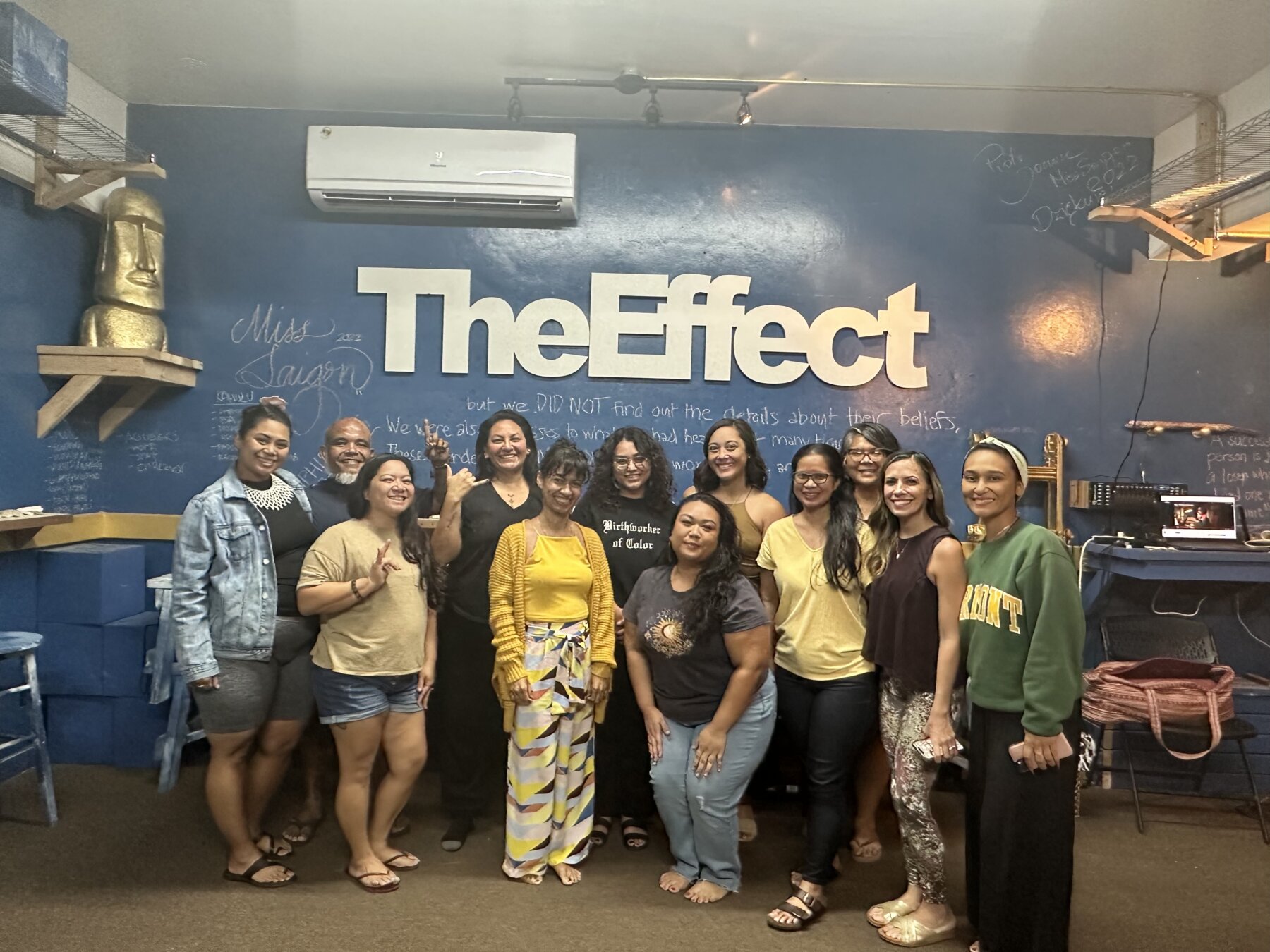
A CHamoru women-led organization is trying to fill these reproductive access gaps. By training CHamoru doulas, the Birthworkers of Color Collective is preparing women on the island for the increasing frequency of climate disasters like Typhoon Mawar, which struck last spring. On heavily militarized, resource-strapped Guam, the collective is hoping to equip the community with Indigenous-centered reproductive practices and rapid-response birthing support.
“When Americans talk about reproductive access and rights, they’re not thinking about how territories like Guam are doubly, triply impacted by laws and decision-making,” said Stevie Merino, the 35-year-old CHamoru founder of the Birthworkers of Color Collective. “Reproductive justice is not just the birth experience, it’s also about climate injustice, food insecurity and affordable housing.”
In Guam, there is the added strong and growing U.S. military presence and a history of colonial trauma that has stripped the CHamoru of their cultural rites, Merino said, which has further impacted reproductive health. “That’s why we need the reclamation of traditional practices,” she said.
Climate change has exasperated Guam’s reproductive access issues
The closure of the Sagua Mañagu birthing center in 2022 dealt a blow to the already-limited resources for maternity patients on the island. Established in 2000, the center was opened to alleviate the strain on Guam Memorial’s OB-GYN department, which at the time was delivering about 400 babies a month on the island. Staffing shortages and business complications following the pandemic made it hard to stay open, center administrators said.
Moñeka De Oro, executive director of the Micronesia Climate Change Alliance, a grassroots environmental justice network, was in charge of distributing mutual aid to the most devastated areas in Guam after Mawar, and witnessed the chaos that maternity patients faced at Guam Memorial. The New York Times reported that 22 babies were born at the hospital during the typhoon, but some mothers were left in a hallway after giving birth due to flood damage. “To add to that, the maternity ward already didn’t have working A/C, and then the ward caught on fire in the midst of the typhoon,” De Oro said.
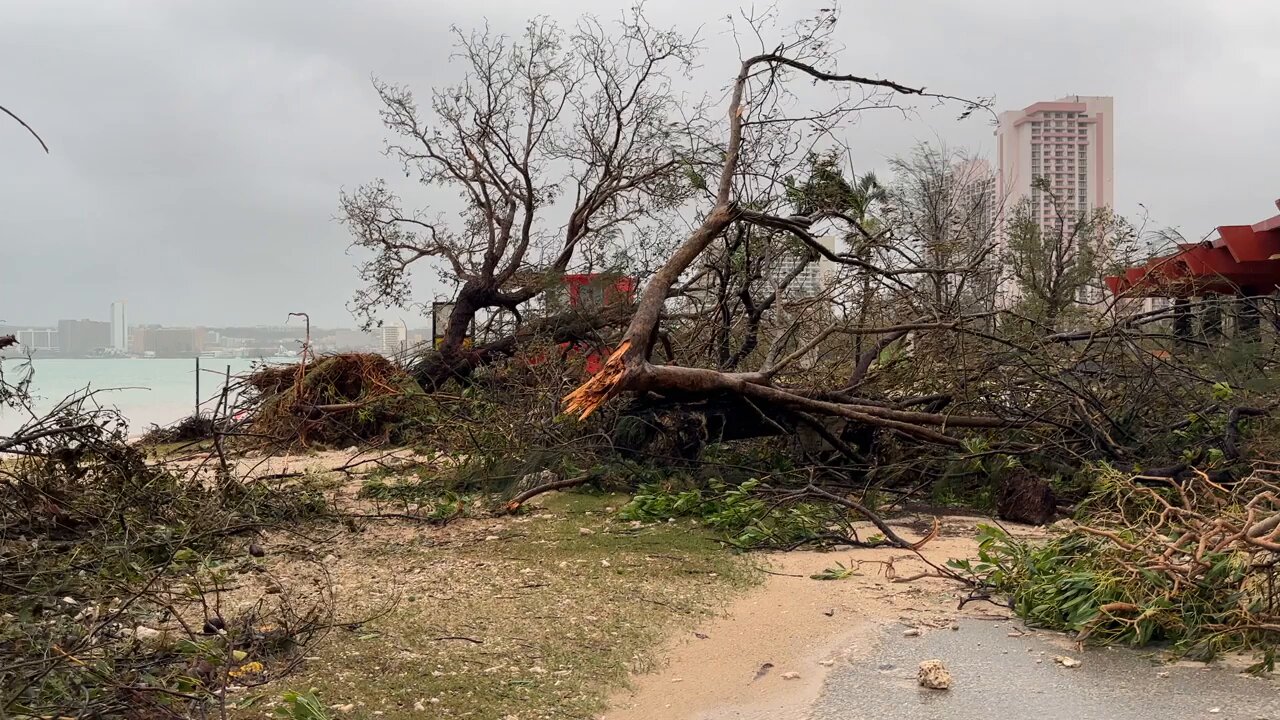
A 2022 Intergovernmental Panel on Climate Change report found that pregnant women were more likely to suffer disproportionately during extreme climate events. In Guam, where maternal mortality and infant mortality rates are higher than the national average and CHamoru infants are five times as likely to die before age 1, a critical care nurse at the hospital testified at a Guam legislative hearing that another supertyphoon could shut down the hospital’s outdated facilities, leaving pregnant people completely stranded with nowhere to go.
Lack of reproductive access is compounded by environmental and cultural issues stemming from the region’s history and strategic location.
When Guam was under Spanish rule from 1521 to 1898, the CHamoru population decreased by 90%. The island was ceded to the U.S. in 1898 following the Spanish-American War, captured by the Japanese in 1941, then recaptured by the U.S. and dubbed the country’s “tip of the spear” in 1944, leading to the environmental destruction of one-third of the island that has come under U.S. military control. Guam and the nearby Marshall Islands have elevated rates of infertility, miscarriages and birth complications due to high levels of nuclear waste and radiation from military testing.
Sexual violence is also rampant in Guam, with the second-highest rates of rape reported per capita in the U.S. Guam’s only rape crisis center was established in 1993, at the hospital, after emergency room services were found to be inadequate for victims. “Behind and outside of the [military] fence, the rate of rapes we have on our island is alarming. It’s not talked about enough or addressed enough, and now we don’t have access to any abortive care for unwanted pregnancies,” De Oro said. Since the retirement of Guam’s only abortion-providing doctor in 2018, women now must rely on telemedicine shipped from Hawaii if they choose to have an abortion.
For over 4,000 years, traditional CHamoru healers practiced and passed down their knowledge — until they were attacked by the Catholic Church for practicing voodoo. Also, the U.S. military took over the land where many herbal plants grew. “On Guam, we had Suruhano healers — people who knew how to work with plant medicine for pregnant bodies and babies,” Merino said. “After World War II, our island was heavily militarized, and healers and midwives were regulated or outlawed by the military government.”
Merino explained that birthing only became a medicalized process within recent decades. “Younger generations are trying to reclaim traditional healing practices, but many practices were lost because they weren’t passed down,” she said. “That’s why our doula training feels especially timely now.”
Recentering Indigenous practices through doula training
Merino, who is based in Long Beach, California, first had the idea to organize a full-spectrum doula training — which covers all pregnancy and postpartum outcomes — in Guam last April, when the Guam Women’s Chamber of Commerce invited her and other local organizations to hold an event on reproductive access. When Typhoon Mawar hit a month later, Merino noticed that there were no directives by the government for how pregnant and postpartum women and their families were supposed to prepare for the coming storm other than ordering very pregnant women to get to the hospital.
“I knew that folks needed more rapid response birthing skills,” Merino said. “We needed more doulas in the community who could support people. We know that climate disasters are going to continue and that the islands are one of the first to be impacted.”
Merino was quickly able to secure grants from reproductive justice organizations for a doula training in Guam. News of the training spread via social media and word of mouth, and 17 participants, mostly CHamoru, signed up for the three-day intensive in December.
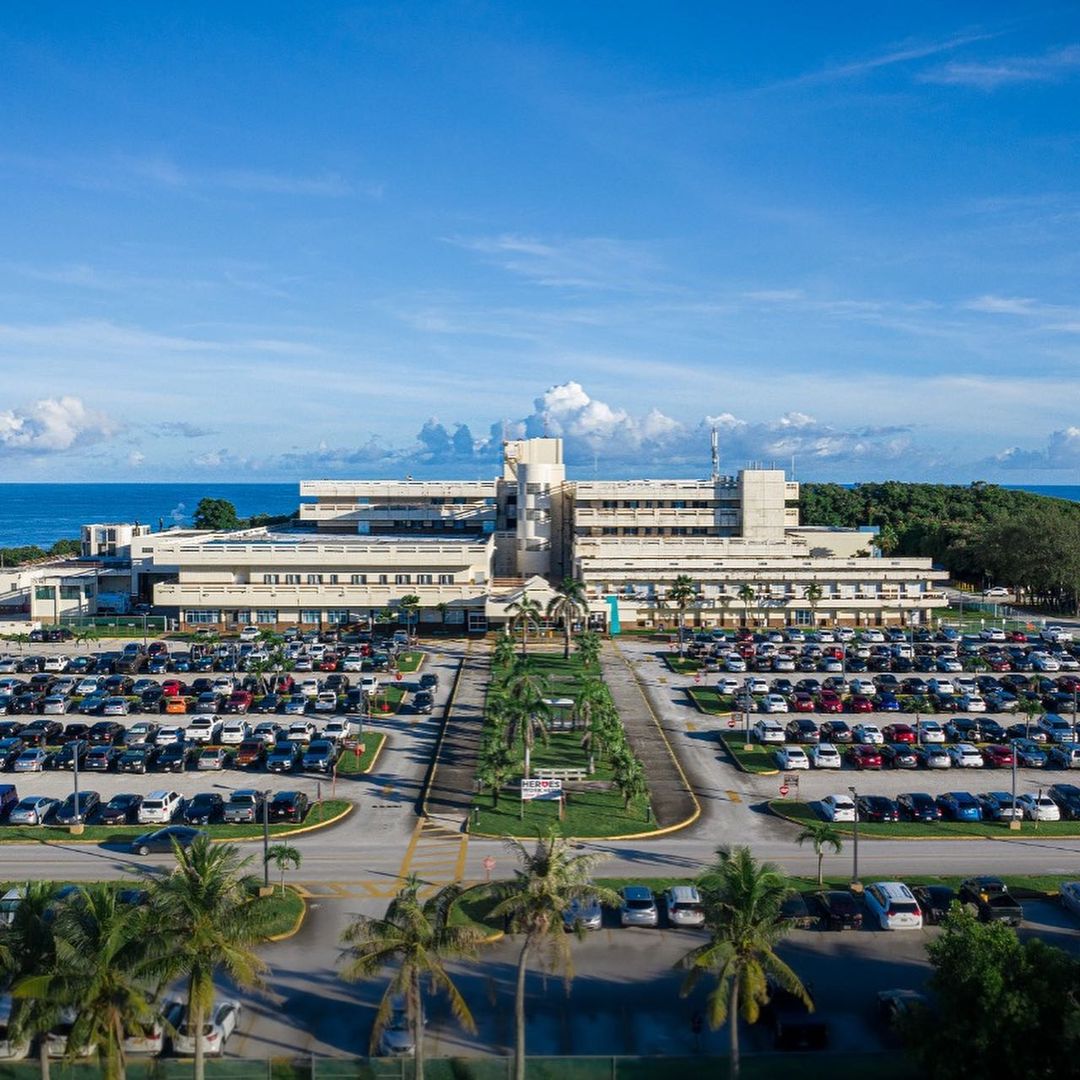
Tia Muña Aguon, 33, heard about the training through Instagram. A Guam native, she had moved back home from New Jersey last year and was shocked to find out that many on the island didn’t know what doulas did. She had chosen natural birth for her three children and opted into the training because she wanted to reclaim CHamoru knowledge. “Unless you’ve grown up around it, traditional birthing practices are most likely lost in your family,” Aguon said. “It was important that we could hear from elders, who could tell us what our ancestors did.”
Every morning, Aguon said the training opened with CHamoru prayers to call their ancestors into the circle. The participants learned from elders about local medicines and herbs that birthing people had used for generations. A healer taught traditional remedies for people trying to get pregnant, had endometriosis or needed after-birth treatment. Aguon said she realized that “birth is sacred, and how do we keep it that way? How do we honor Indigenous practices as doulas?”
Marati added that centering Indigenous birthing knowledge was a way of honoring what her ancestors might have done only a few generations ago. “It felt like a remembrance of something that we know inherently — to support women in this way,” she said. “The elders shared their knowledge with us so we can carry it on in the birthing world.”
Because the three-day doula training covered all aspects of birthing — prenatal pregnancy, labor and delivery, abortion and miscarriage — the doulas-in-training were encouraged to explore what they were drawn to. “What is the strongest, loudest need you want to fulfill?” Merino asked attendees. “How do you feel called to serve?”
Some attendees were surprised to find that they felt the urge to tackle a taboo and become abortion doulas. “The island is very rooted in Catholicism,” said Gilayna Santos, a former Guam Pacific Daily News editor who attended. “The stigma around the choice [to get an abortion] is very charged. Many women have had to make the choice out here, but they don’t talk about it.”
Santos, 34, said that when she found out she was pregnant in 2014, family members shamed her into thinking God would punish her if she had an abortion, which drove her into isolation and fear. Her saving grace was an older woman who talked her through her options non-judgmentally, after which she chose to get an abortion. Santos hopes to do the same for other women and even go a step further — be present with them during the actual procedure. “What I really wish I got that I didn’t was the actual person in the room, someone there supporting me in that belief or that decision,” Santos said. “It’s so important to have another person there advocating for you, when you’re in the middle of such an intense experience.”
Ongoing solutions and challenges
The 17 doulas in training are now finishing an online course on maternal mental health, lactation, Pacific Islander postpartum traditions and other topics that weren’t covered during the three-day training in December. While Merino doesn’t believe in certification because it goes against ancestral traditions, doulas will get ongoing education through Google Classroom and meet virtually to discuss integrating doulas into standard care at the hospital. Because of continued interest, Merino is planning another full-spectrum doula training in Guam for May and hopes to set up more trainings on nearby islands.
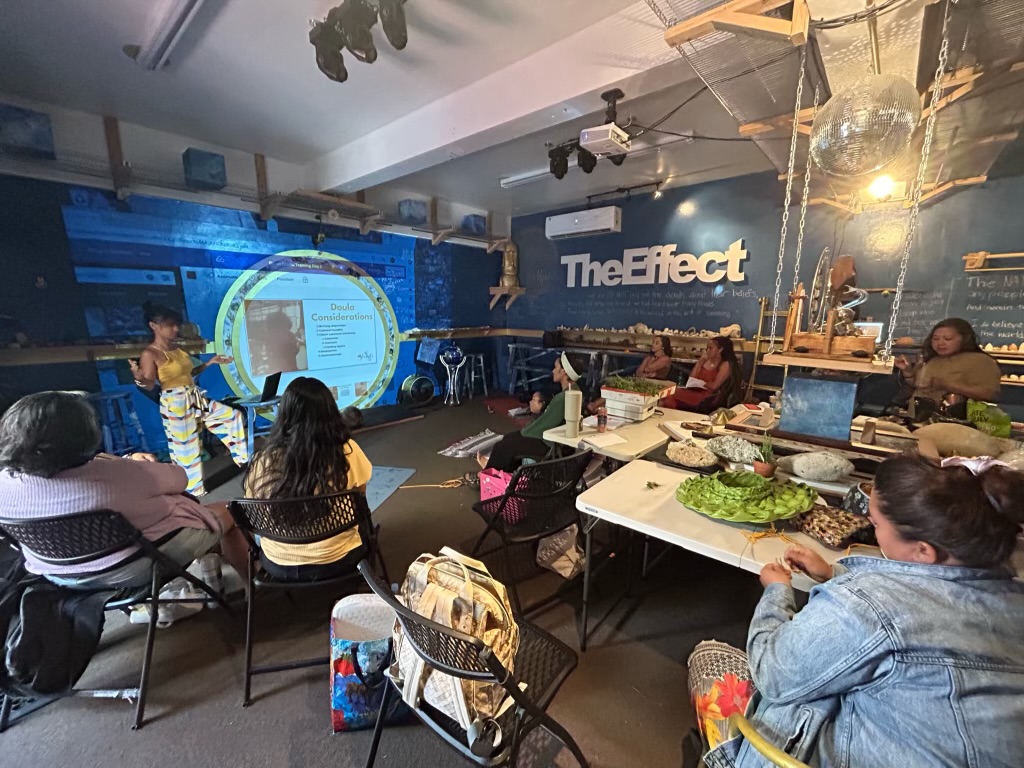
Meanwhile, doulas like Marati and Aguon are already offering their services on the island. Marati has two pregnant clients whom she hopes to support through their pregnancy and into postpartum. “I’m honored that these clients are now trusting me to be a part of their birthing journey,” Marati said.
Aguon, too, is now an official doula for four clients. Three are birthing at Guam Memorial, where she said labor and delivery is often rushed and factory-like because of the lack of resources in the maternity ward. While Cindy Hanson, the Public Information Officer for the hospital, said the facility is upgrading its power system this spring, the spokesperson didn’t deny “challenges due to [the building’s] age.”
When Aguon showed up to support her first client’s birth, the nurses asked her in the recovery room about the purpose of a doula. “There’s a missing link there,” Aguon said. “Having a doula isn’t normalized and understood in Guam.”
But she hopes to slowly change that. “As a doula, I just want to stand as an educator and an advocate, so that the mothers themselves are empowered to follow their intuition and make their own choices,” Aguon said.


